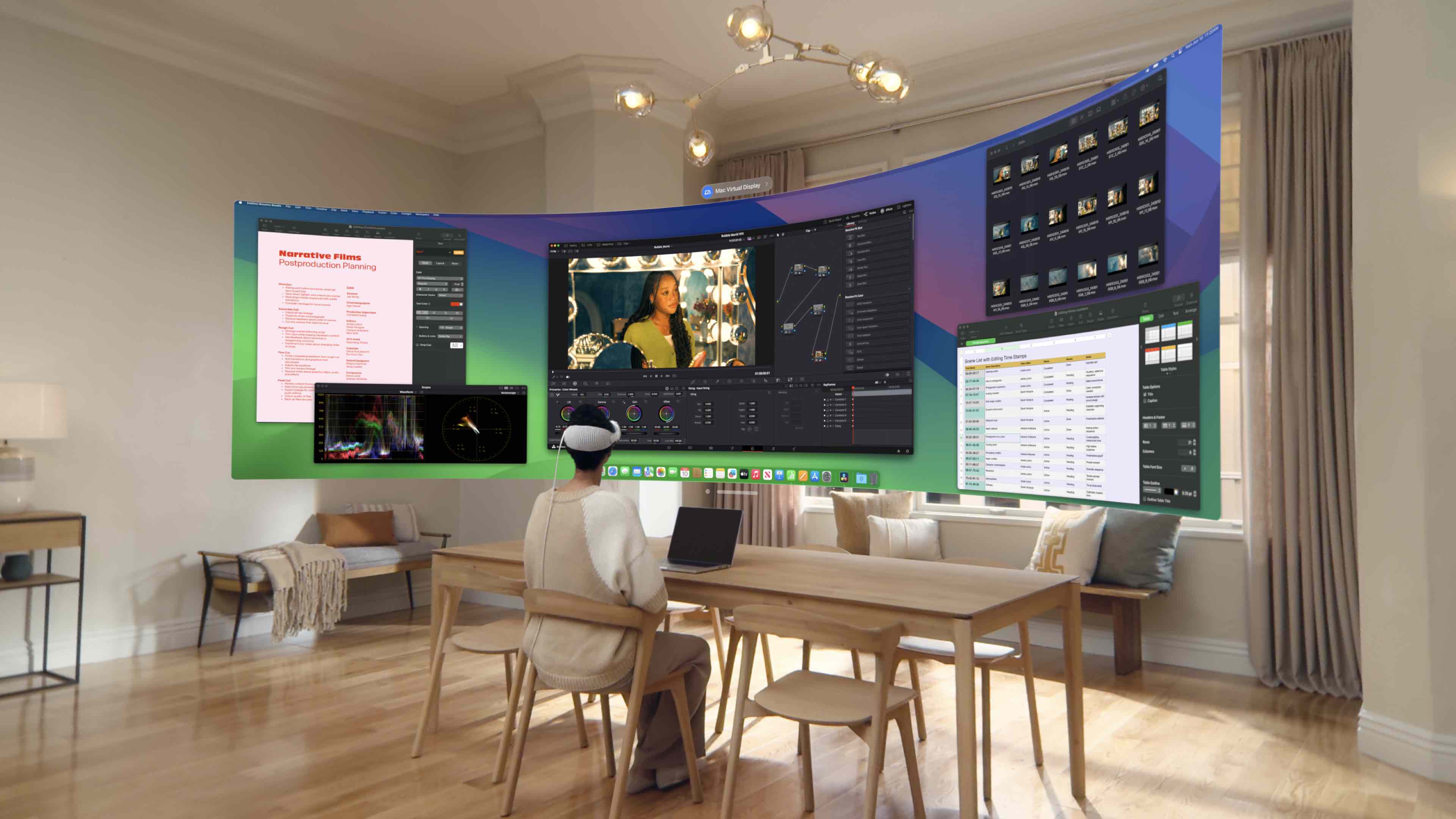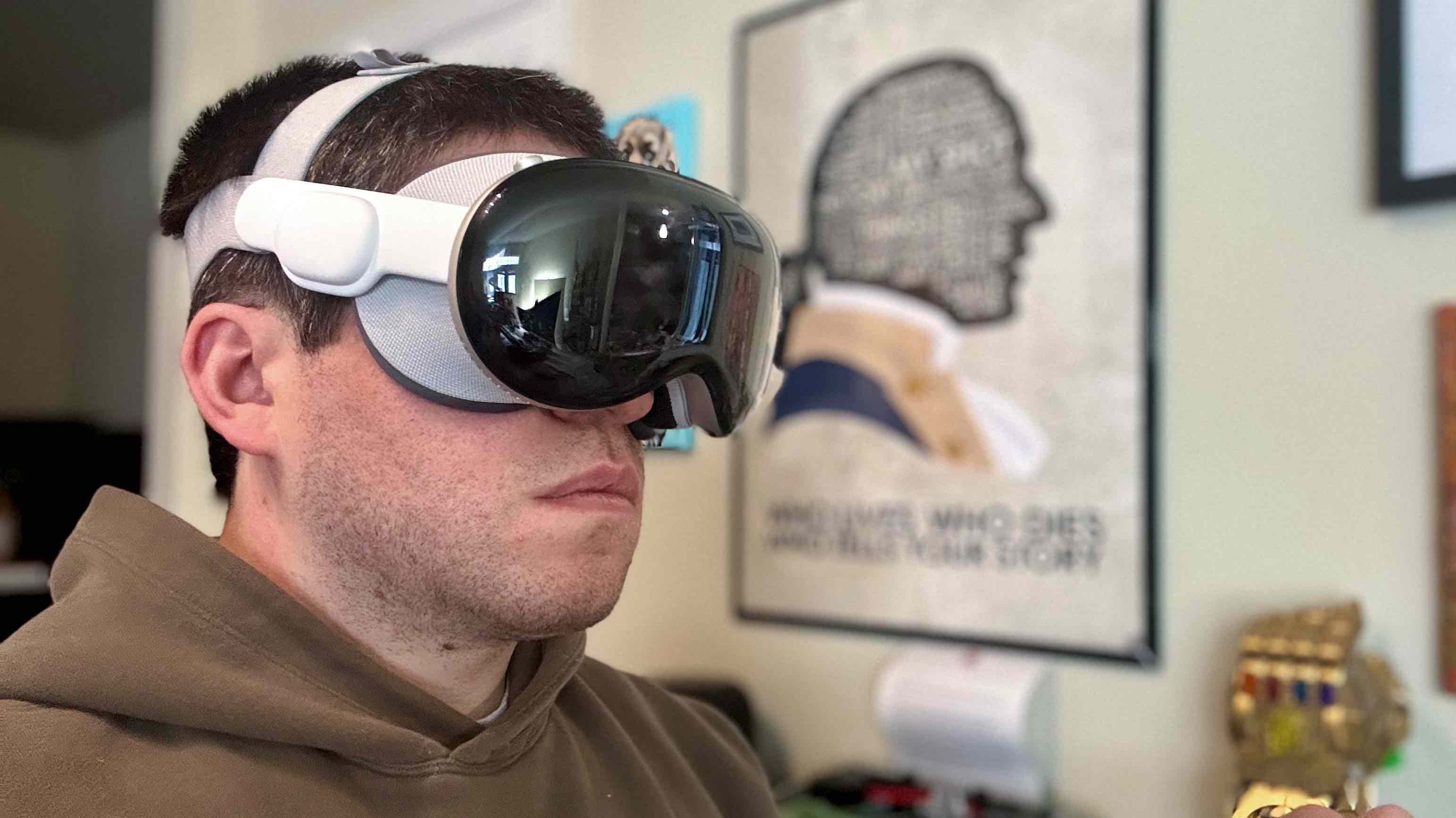We’re in the midst of the Apple Vision Pro’s first holiday season – I know, we all can’t wait to wish it season’s greetings – and there is a fantastic update in the form of VisionOS 2.2. And no, it’s not the arrival of Apple Intelligence.
First teased back in June 2024 at Apple’s Worldwide Developer Conference was a major upgrade to the Mac Virtual Display experience – new display sizes, including a behemoth ultrawide curved monitor view. It’s always been a popular feature of the $3,500 Spatial Computer, the fact that you can stream your Mac display – as long as it’s an M-series-powered unit – directly to your Vision Pro with almost no noticeable lag.
Whether you’re stuck in a middle seat on an airplane, yearning for a larger screen, or just working from home and wanting a bigger monitor that can be stretched to what feels like infinity, Mac Virtual Display on the Vision Pro simply got the job done. Still, it was a classic flat monitor digitized; it didn’t have a wrap-around effect.
That’s solved now, though. In a demo where I got to play Lies of Pi streamed from a 16-inch MacBook Pro with M4 Pro and do some daily business in macOS Sequoia from a Mac mini with M2 or a 14-inch MacBook Pro with M3, it was a lightbulb moment.
Wide or Ultrawide feels like a new dimension for the Vision Pro

In the demo, I sat in a pretty cozy chair, selected Mac Virtual Display by simply staring at a 16-inch MacBook Pro in Space Black, and then was greeted by a sub-menu instead of just firing up the display. You can now choose from three sizes: standard, wide, or ultra-wide.
Standard is, as you might suspect, the standard experience we’ve had since day one on the Apple Vision Pro with two key differences – it’s now at a 5K resolution and is slightly curved to make it more natural to use.
Wide is cool at 21:9, but Ultrawide kicks it into well ultra-high-gear at 32:9, which is the equivalent of two displays side-by-side, as what Apple says is a 5K resolution.
It looks undeniably sharp and really gives the impression that it wraps around you. Much like any window within VisionOS, you can stretch it up by looking at the bottom corner and simply pulling with your pinched thumb and forefinger. I especially liked this, and unlike a conventional curved monitor – maybe one from TechRadar’s best gaming monitor list – you’re not locked into whatever size you select based on the monitor you can buy.
I was able to resize the monitor to a supersized curved screen that filled the room when I wanted to be in the action of Lies of P, but I could also shrink it down to see other folks in the space or even dim the lights to an evening on the Moon. It’s especially immersive for gaming, and I like that audio from the Mac can pass through the Spatial capable speakers on Vision Pro or AirPods Pro.

It also makes the Vision Pro an even better fit for extending the power of the Mac – be it a Mac mini, MacBook Air, or MacBook Pro. Many, if not all, of the M-powered Macs, can handle these AAA gaming titles and dozens of Apple Arcade titles, but there’s also something to be said about working within Vision Pro and just using your Mac. In fact, I wrote this piece on the ultra-wide screen.
Of course, you need to be comfortable wearing a headset and invest in the Vision Pro at $3,500 (starting). We’ve been wondering about a potential killer app or experience for the Vision Pro.
My colleague Lance Ulanoff wrote about one year of Apple’s Spatial Computer earlier this year. Still, this type of experience with the Mac is really spectacular. Rumors of a potential collaboration with Sony PlayStation for more supported controller types make the prospect of future games you could play on a Mac in UltraWide on the Vision Pro quite exciting.
It was a long road for visionOS 2.0 to release fully, and visionOS 2.2 finally delivers a better view of the Standard Mac Virtual Display and two new sizes; it makes the experience even better.
You might also like
from Latest from TechRadar US in Computing News https://ift.tt/IXHqTVF
via

0 Comments: